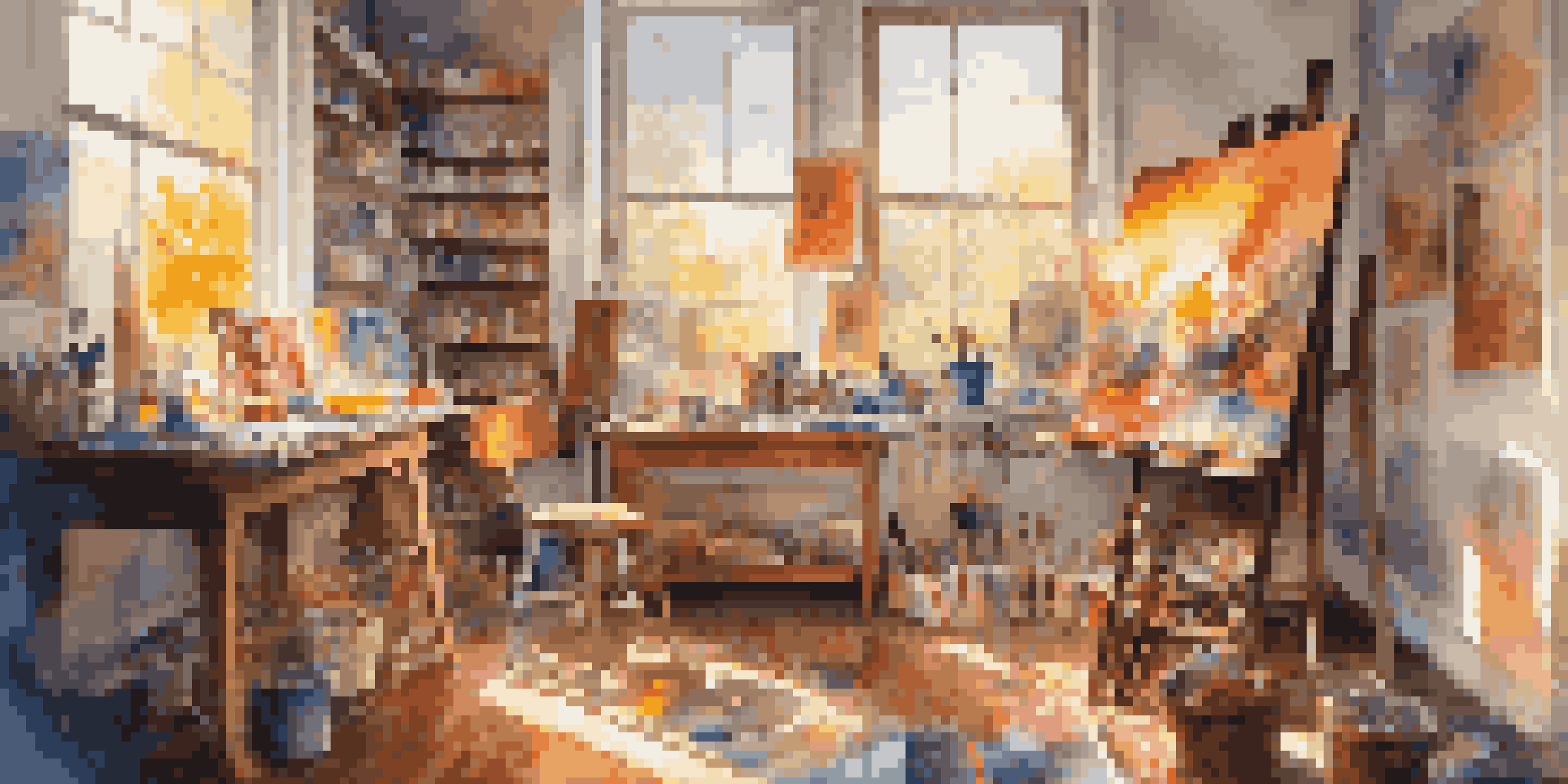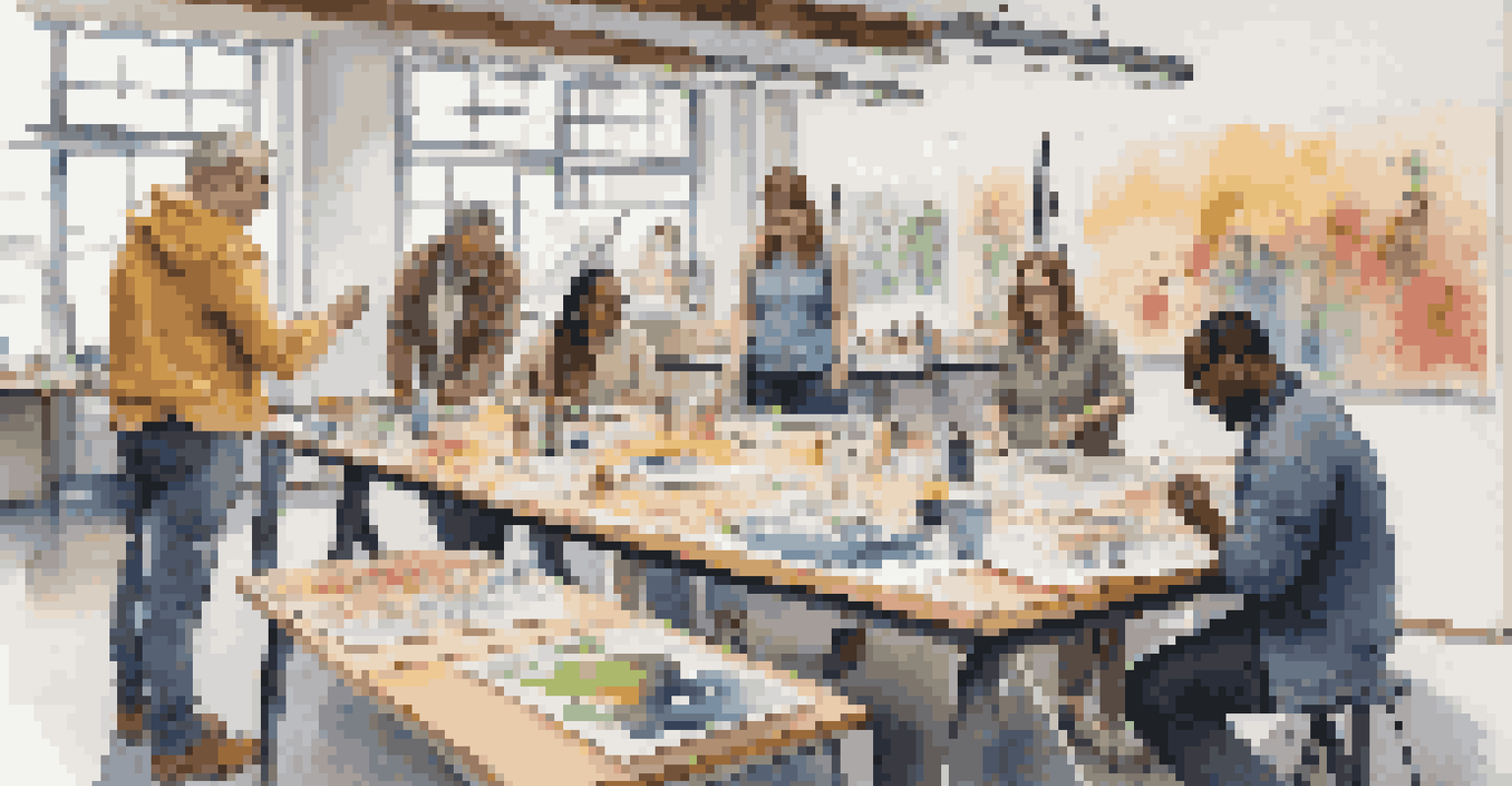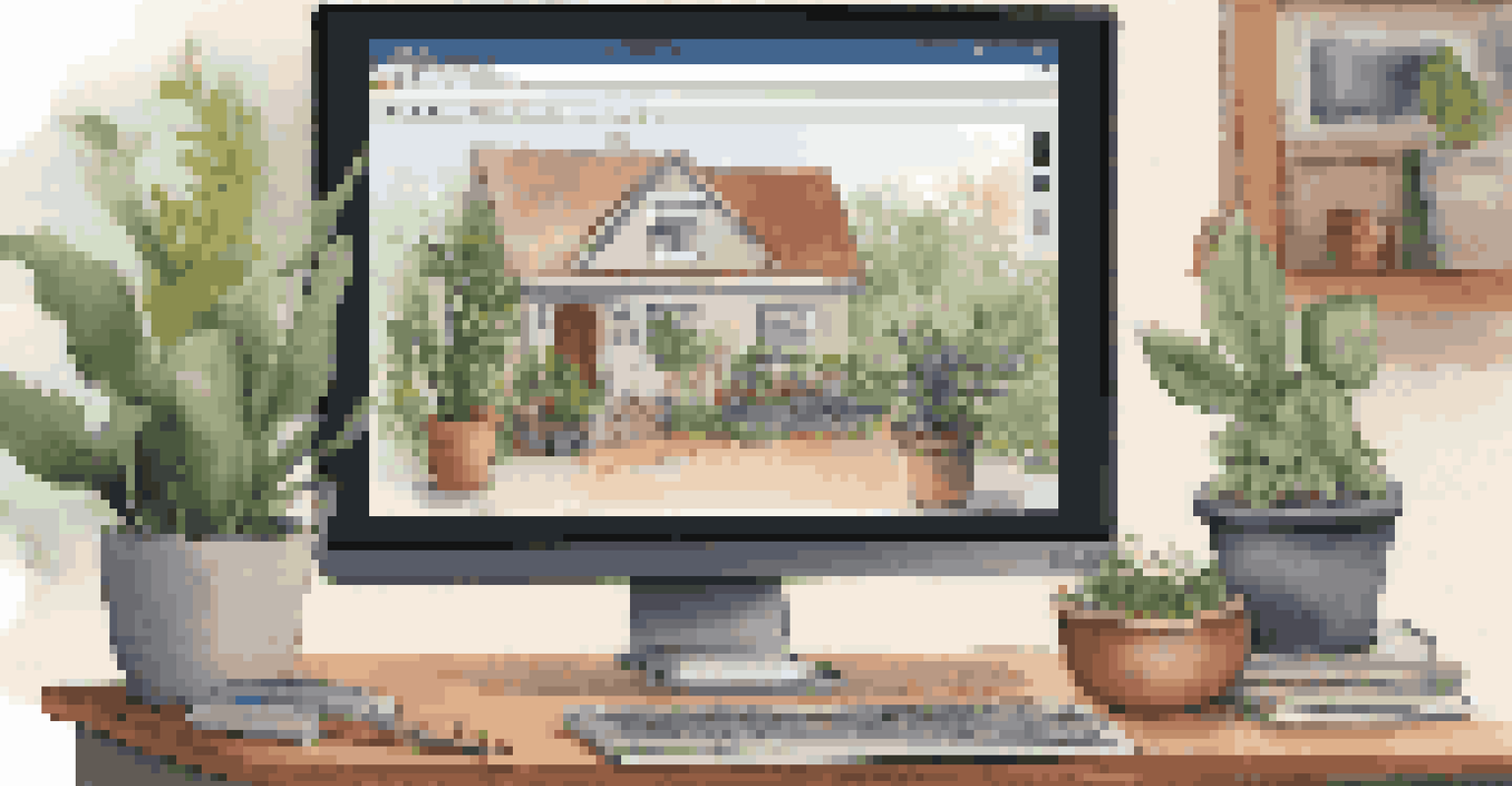The Influence of Social Media on Art Education Accessibility

The Rise of Digital Platforms in Art Education
In recent years, social media platforms have transformed art education, offering unprecedented access to resources and learning opportunities. Artists and educators can now share their knowledge and techniques through platforms like Instagram, YouTube, and TikTok, making art more approachable than ever. This shift allows students from various backgrounds to engage with art education outside traditional classroom settings.
The art of education is the art of assisting discovery.
For instance, an aspiring artist can follow renowned painters or illustrators on Instagram, watching their creative processes unfold in real-time. This kind of exposure not only inspires budding artists but also demystifies the techniques involved in creating art. The ability to connect with artists directly fosters a sense of community and support that traditional education may lack.
Moreover, the abundance of free tutorials and live demonstrations available online means that anyone with internet access can learn art. This democratization of knowledge is a game-changer, particularly for individuals who may not have the financial means to attend formal art schools.
Creating a Global Community of Learners
Social media enables artists and educators to connect across geographical boundaries, creating a global community of learners. This interconnectedness means that someone in a small town can learn from experts around the world, breaking down the barriers of location. Whether through collaborative projects or online critiques, users can share their art and receive feedback from a diverse audience.

Consider the impact of challenges like Inktober, where artists worldwide participate by creating daily art prompts. These challenges foster a sense of belonging and motivation, as participants can view and comment on each other's work. This collective participation nurtures creativity and helps artists grow, regardless of their starting point.
Social Media Transforms Art Learning
Digital platforms provide unprecedented access to art education, allowing diverse learners to connect with artists and educators globally.
Furthermore, social media allows for the sharing of cultural perspectives and artistic styles that enrich learning experiences. Exposure to different techniques and traditions broadens understanding and appreciation of art, benefiting all participants involved.
Accessibility Beyond Physical Barriers
One of the most significant advantages of social media in art education is its ability to transcend physical barriers. For individuals with disabilities or those living in remote areas, traditional art classes may not be accessible. However, online platforms provide an alternative way to engage with art education from the comfort of their homes.
Art is not freedom from discipline, but disciplined freedom.
For example, virtual workshops and online courses can be tailored to meet diverse needs, including those with mobility challenges. This adaptability ensures that everyone has the opportunity to explore their creativity without the limitations imposed by physical locations. Moreover, many platforms offer captioning and audio descriptions, making content more inclusive.
By removing these physical barriers, social media fosters a more inclusive environment where everyone can participate in art education, regardless of their circumstances. This accessibility cultivates a richer and more diverse artistic community.
The Role of Influencers in Art Education
Influencers have emerged as key players in the realm of art education, using their platforms to share insights and techniques with a broad audience. Many artists leverage their follower base to teach skills, host Q&A sessions, or provide critiques, democratizing the access to art education. Their relatable approach brings a fresh perspective to traditional teaching methods.
For instance, an artist may post a video explaining color theory in a fun and engaging way, making complex concepts more digestible. This informal yet informative style resonates with many learners who might find traditional lectures daunting. The personal touch of influencers can inspire individuals who might have otherwise felt disconnected from the art world.
Global Community of Artists
Social media fosters a worldwide community that encourages collaboration and feedback, enhancing creativity and artistic growth.
Moreover, influencers often highlight emerging artists and trends, providing a platform for diverse voices in the art community. This exposure not only amplifies underrepresented artists but also enriches the learning experience for everyone involved.
Interactive Learning Through Social Media
Social media platforms thrive on interactivity, which plays a crucial role in enhancing art education. Unlike traditional classrooms, students can engage directly with educators and peers through comments, shares, and collaborations. This dynamic interaction fosters a more enriching and participatory learning experience.
Consider how platforms like Instagram allow artists to share their work in progress, inviting feedback from their followers. This two-way communication encourages learners to ask questions and engage deeply with the art-making process. Additionally, live streaming sessions enable real-time interaction, where students can ask questions as they learn.
This level of engagement transforms passive consumption into active participation, making learning more effective and enjoyable. The community aspect of social media nurtures a supportive environment where individuals feel encouraged to share their work and learn from one another.
Challenges and Limitations of Social Media in Art Education
While social media offers numerous advantages for art education, it also presents certain challenges that need to be addressed. One major concern is the overwhelming amount of content available, which can make it difficult for learners to discern quality information. With so many voices and opinions, sifting through the noise can be a daunting task.
Additionally, not all art educators on social media may have formal training or expertise, leading to the spread of misinformation or subpar techniques. It's essential for learners to approach online content critically, verifying sources and seeking out qualified educators. This self-directed learning requires a level of discernment that not all students may possess.
Challenges in Online Art Education
Despite its benefits, social media poses challenges like information overload and the pressure to create content, which can hinder genuine learning.
Moreover, the pressure to produce content for social media can sometimes overshadow the learning experience. Artists may prioritize creating shareable pieces over exploring their creativity, which can stifle genuine artistic growth. Balancing the demands of social media with the pursuit of personal artistic development is crucial for maintaining a healthy relationship with these platforms.
The Future of Art Education in a Social Media World
As social media continues to evolve, its impact on art education will likely grow, shaping how we learn and connect with art. Future trends may include more comprehensive online courses that blend traditional techniques with innovative digital practices. With advancements in technology, we might see even more immersive experiences, such as virtual reality art classes.
Moreover, increased collaboration between educators and influencers could create structured yet flexible learning pathways for students. This synergy could help maintain quality while still embracing the informal, engaging nature of social media. As art education becomes more intertwined with digital platforms, it will be essential to adapt and innovate to meet the needs of diverse learners.

Ultimately, the goal of art education should remain the same: to inspire creativity and foster self-expression. By leveraging the strengths of social media while addressing its challenges, we can create a more inclusive and accessible future for aspiring artists everywhere.